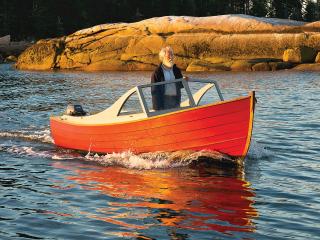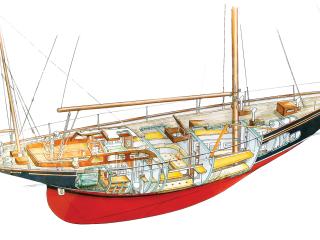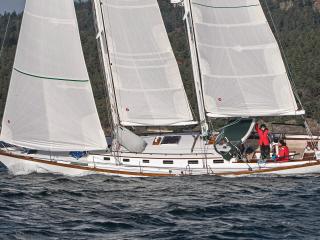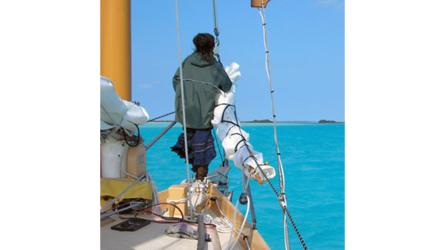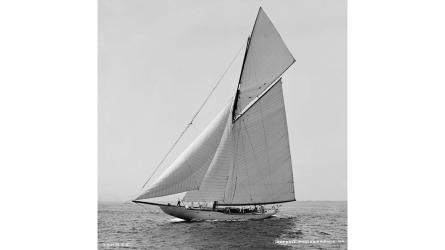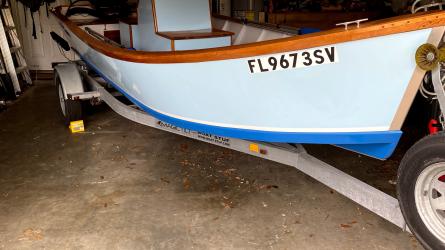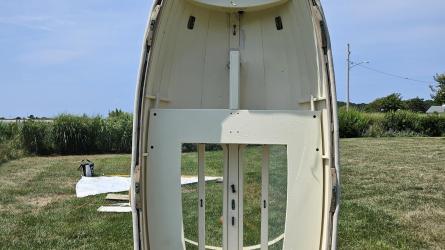July / August 2021
Flying Into the Future
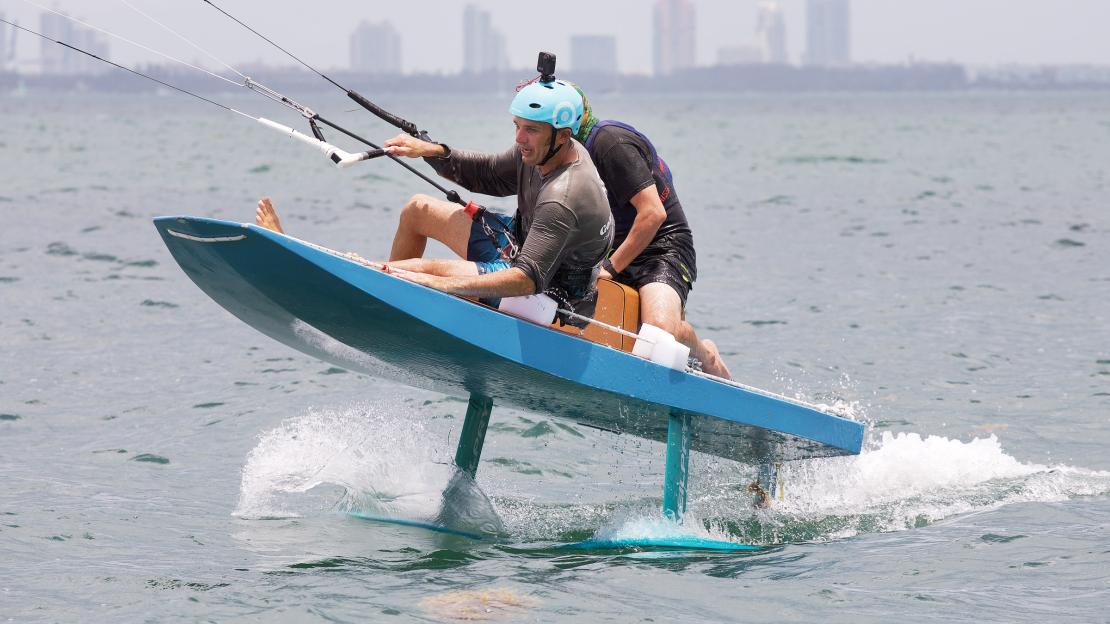
CF Boatworks, based in Fort Lauderdale, Florida, builds experimental foiling sailboats in between projects ranging from building and restoring wooden boats to installing and repairing hydraulic and electronic systems.
There are two distinct types of excitement in boating. One is the flood of pride that comes from the successful launch of a painstakingly built Riva Scoiattolo or placing the final plank on a home-built tender. The other is the rush that comes from flying above the water in a souped-up foiling boat.
Foilers, boats that have wing-like sails capable of generating enough lift to raise a hull out of the water, thereby reducing wetted surface area and drag, are able to reach speeds exceeding twice that of the wind and deliver a sailing experience like no other. In the most recent AMERICA’s Cup, the AC75s—which are foilers—ripped across Waitemata Harbour, in Auckland, New Zealand. As foiling boats become the norm in the upper echelons of the match-racing world, the foiling phenomenon continues to trickle down to other sailboat design. The exponential growth of foiling classes such as the International Moth and the Nacra 17 in the past decade or so suggests that foiling boats are here to stay. If young, up-and-coming sailors continue to trend toward foiling, what does the future look like for wooden boats?
On the surface, it seems as though these two worlds are irreconcilable. Wooden boats once represented the pinnacle of innovation in boat construction. But as the recreational marine industry moves toward faster, lighter, more energy-efficient foiling boats, can wood remain relevant? The family team at CF Boatworks in Fort Lauderdale, Florida, thinks it can.
To read the rest of this article:
Click the button below to log into your Digital Issue Access account.
No digital access? Subscribe or upgrade to a WoodenBoat Digital Subscription and finish reading this article as well as every article we have published for the past 50-years.
ACCESS TO EXPERIENCE
2-for-1 Print & Digital Subscription Offer
For this holiday season, WoodenBoat is offering our best buy one, get one deal ever. Subscribe with a print & digital subscription for $42.95, and we’ll give you a FREE GIFT SUBSCRIPTION to share with someone special.
1 YEAR SUBSCRIPTION (6 ISSUES)
PLUS ACCESS TO MORE THAN 300 DIGITAL BACK ISSUES
PRINT+DIGITAL $42.95
Subscribe
To read articles from previous issues, you can purchase the issue at The WoodenBoat Store link below.
 Purchase this issue from
Purchase this issue from

